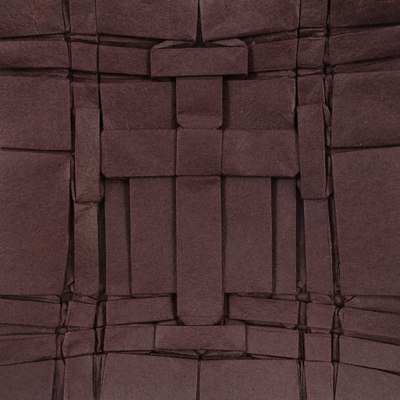Korean Hanji Paper Review

I folded the Crucifix model with Korean Hanji paper which had been on my waiting list for some time. Note that Origami Shop sells both this paper and Traditional Korean Handmade Hanji, which is a different kind. Korean Hanji is a thin paper (by my standards) and the lighter colors are more translucent than the dark brown sheet used here. Against the light, you can see varying thickness and pigmentation, but the coloring and texture are so strong that it’s almost impossible to see creases on a precreased sheet against the light. The paper is slightly shiny, has an interesting texture, and looks great. An advantage of the texture which hides the creases is that it’s possible to quite efficiently hide small errors such as a crease in the wrong spot, especially if it is “erased” using a bone folder.
Folding went very well, with creases being clean and sharp. There was some difference in bending resistance between the two perpendicular directions, but not very much. This may be due to the paper being quite thin. Folding the grid went well, and I felt that I could fold precisely, with the paper keeping its geometry well while being folded. Reversing the creases was easy, and I enjoyed folding this paper.
I used a 20 cm sheet for this model, and the smallest pleats on the back side correspond to a 1/64 grid. Unfortunately, I precreased only 1/32 and folded the smallest pleats on a partially collapsed model which led to it being messy. The squashing of the pleats went well, but since I performed it on a partially folded model, it lacked precision (due to the folder, not the paper). I’m quite sure I could get a much better fold of this model if I precreased down to 1/64 and/or used a larger sheet.
The collapse went well, which is not a given with thin paper. The sheet was quite crispy and collapsed along the precreased lines even after a few partial collapses and unfoldings. Overall, I’m very happy with this paper, and feel like gladly using it for those models which require a complex collapse and a somewhat thinner paper at the same time.
Comments